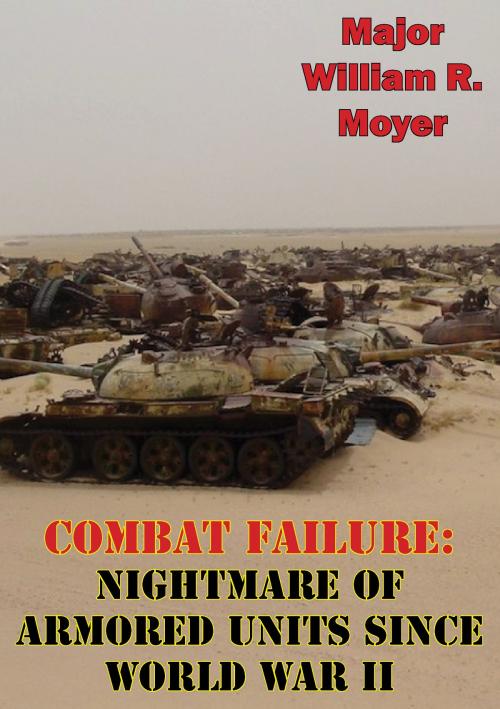Combat Failure: Nightmare of Armored Units Since World War II
Nonfiction, History, Germany, European General, Military, United States| Author: | Major William R. Moyer | ISBN: | 9781782899846 |
| Publisher: | Lucknow Books | Publication: | November 6, 2015 |
| Imprint: | Lucknow Books | Language: | English |
| Author: | Major William R. Moyer |
| ISBN: | 9781782899846 |
| Publisher: | Lucknow Books |
| Publication: | November 6, 2015 |
| Imprint: | Lucknow Books |
| Language: | English |
This monograph examines the relationship between physical forces prevalent on the modern battlefield and the causes inherent to US armored battalion failure since World War II. Given the complexity of today’s battlefield in terms of technology, command and control, and lethality, examining the physical aspects of failure can offer the clearest understanding of unit failure as a whole; after all, physical actions and reactions in battle are more easily analyzed.
To determine the relationship between armored failure and physical forces on the battlefield, I first provide some theoretical and contemporary perspectives on the physical aspects of unit failure. Next, the causes and conditions of battlefield failure are identified and examined, followed by a discussion of the processes of failure. After laying a foundation of theory and the processes of failure, historical examples as well as recent armored NTC experiences are examined to determine the decisive causes of failure for US armor units since World War II.
My conclusion is that effective enemy maneuver, when complimented with overwhelming fires is the decisive cause of failure for US armored units since World War II. Maneuver sets the conditions for both physical and moral destruction. However, failure is difficult to isolate; it is complex and occurs most often because of a combination of actions rarely just one. Clearly, technology has a great deal to do with physical failure. Maneuver, firepower, and protection have increased the power and importance of physical forces in relation to moral and cybernetic forces. Ultimately, overwhelming enemy maneuver and fires rapidly destroy unit cohesion as well as the physical capabilities of the defeated unit.
This monograph examines the relationship between physical forces prevalent on the modern battlefield and the causes inherent to US armored battalion failure since World War II. Given the complexity of today’s battlefield in terms of technology, command and control, and lethality, examining the physical aspects of failure can offer the clearest understanding of unit failure as a whole; after all, physical actions and reactions in battle are more easily analyzed.
To determine the relationship between armored failure and physical forces on the battlefield, I first provide some theoretical and contemporary perspectives on the physical aspects of unit failure. Next, the causes and conditions of battlefield failure are identified and examined, followed by a discussion of the processes of failure. After laying a foundation of theory and the processes of failure, historical examples as well as recent armored NTC experiences are examined to determine the decisive causes of failure for US armor units since World War II.
My conclusion is that effective enemy maneuver, when complimented with overwhelming fires is the decisive cause of failure for US armored units since World War II. Maneuver sets the conditions for both physical and moral destruction. However, failure is difficult to isolate; it is complex and occurs most often because of a combination of actions rarely just one. Clearly, technology has a great deal to do with physical failure. Maneuver, firepower, and protection have increased the power and importance of physical forces in relation to moral and cybernetic forces. Ultimately, overwhelming enemy maneuver and fires rapidly destroy unit cohesion as well as the physical capabilities of the defeated unit.


![Cover of the book FIGHT AT THE LOCK [Illustrated Edition] by Major William R. Moyer](https://www.kuoky.com/images/2014/august/300x300/9781782893530-1wnL_300x.jpg)







![Cover of the book A Surgeon In Khaki [Illustrated Edition] by Major William R. Moyer](https://www.kuoky.com/images/2014/august/300x300/9781782892700-YwlT_300x.jpg)




